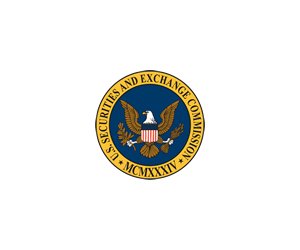The US Securities and Exchange Commission (SEC) voted today to approve securities lending reporting (10c-1) and short selling (13f-2) reporting rules. Our initial take is that 10c-1 will cause confusion and be of limited use. 13f-2 on the other hand could create some changes in short selling practices.
The SEC’s 10c-1 proposal on securities lending transparency was issued under a Dodd-Frank section that tasks the regulator with improving transparency in the markets for securities lending. The final rule requires that loans be reported at the end of day, compared to the proposal of reporting within 15 minutes.
The final rule, like the proposal, intends to release loan information to the public without identifying characteristics, for example if the loan was from an institution, a retail broker or between institutional prime brokers. Unlike the proposal that suggested that data be made public “as soon as practicable” that sounded like a real-time ticker, the final rule will have a T+1 release of aggregated data and release of more detailed information 20 days later.
The bundling of types and counterparties in securities lending is expected to cause confusion for both professional and retail audiences and reduce the utility of the data. Securities lending does not price like equity markets, and differences in types of lenders and borrowers, cash or non-cash collateral, overnight or term and other variables can result in wide variations; the public may not see any of this. An analogy for this is a real estate loan ticker for the entire US that includes retail and commercial property – not very helpful. For retail investors, a mash of data is expected to result in a lot of arguments about rates with brokers and not the transparency that regulators were hoping for. This seems similar in nature to us as the SEC and CFTC’s reporting on Total Return Swaps. The regulator however will have access to all the underlying data elements including the names of the counterparties.
The cost of reporting with the onus on lending institutions in 10c-1 is a new dynamic that many lenders are not used to, given that assistance is usually provided by their agents or borrowers. There are some legal concerns about who owns the liability for any data breaches. Market participants have noted that the reporting required by the SEC would force technology upgrades that could be impactful in other areas of securities processing. That may be a moot point however as T+1 settlement will happen faster than 10c-1 implementation, which looks to be two years out, going live in October 2025. Better processing does not appear to be a reason to invest the projected $500 million (updated from $375 million) to set up 10c-1 (and $200 million ongoing), but maybe some side benefits could be realized.
The final rule removes the requirement to report available inventory, which we did not find fit for purpose. That’s a good move.
10c-1 is different from Europe’s Securities Financing Transactions Regulation (SFTR). 10c-1 requires one-sided lender reporting of 12 data elements to a Registered National Securities Association (expected to be the Financial Industry Regulatory Authority, or FINRA), instead of the 150+ required by SFTR, and SFTR requires both lenders and borrowers to report. SFTR includes repo while 10c-1 is for securities loans only. The end of day reporting for 10c-1 with turnaround on T+1 is vastly faster than the end of week reporting provided by Europe’s SFTR Trade Repositories. Some market participants think that 10c-1 may turn out to be a test run for a future SFTR Refit, resulting in substantially more European transparency in the end.
Market participants have the usual set of concerns about what benefit the data would provide, what resources the SEC would need to monitor and analyze the data, and how other proposals on short sales and derivatives transparency would combine to create a negative impact of over-transparency, featuring the potential for market-disruptive short squeezes – this is the 13f-2 part of today’s approvals. However, industry participants say that 10c-1 could result in better benchmarking and analytics services with details on supply-demand dynamics.
Rule 13f-2 is on short selling reporting. The SEC says that the rule will “require certain institutional investment managers to report short sale related information to the Commission on a monthly basis. The Commission then would make aggregate data about large short positions, including daily short sale activity data, available to the public for each individual security.” Managers will need to report the number of shares shorted and the dollar value of the position; the SEC will then create a consolidated exposure file with a one month lag. There are some exclusions for what securities are included. Market concerns have again been raised about over-transparency, similar to 10c-1, leading to a reduction in market participation and potential short squeezes; we agree that this could be impactful. Some big short selling funds could also reorganize themselves as family offices or in other structures that would not require reporting.
We expect that Finadium and others will collect both datasets to see what can be learned. The 13f-2 reports could be interesting and will be compared over time to the short selling data issued by exchanges. The 10c-1 data could be useful if cleaned; the big data providers will have the first mover advantage here. We think that retail investors could wind up with only modestly intelligible securities lending information and more likely, frustration about the differences in the rates they see from public reporting and the rates they are quoted by their brokers.
Both proposals passed with a vote of 3-2.


